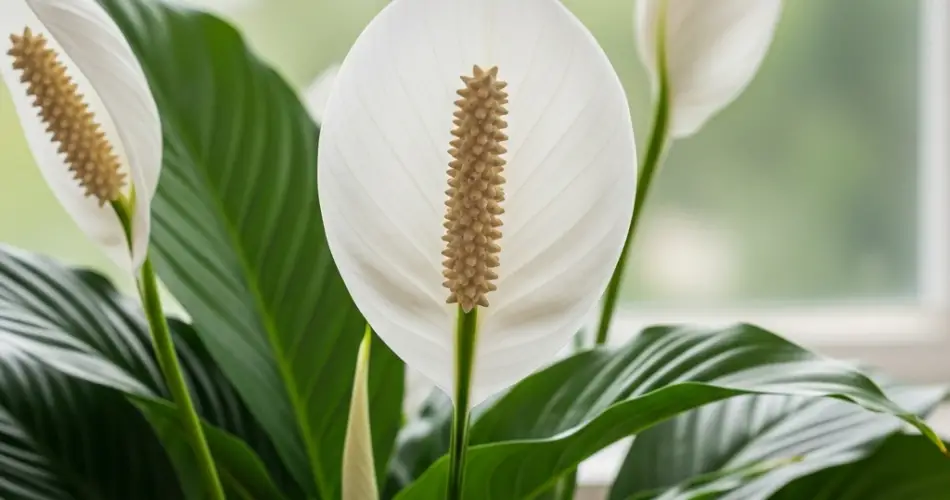Peace lilies (Spathiphyllum) are beloved for their graceful white blooms, glossy green leaves, and ability to purify indoor air. While they’re commonly propagated by division, growing a peace lily from seed is a slower but rewarding process for patient plant lovers. With the right steps and care, you can germinate peace lilies and eventually enjoy elegant flowers all year long.
Here’s how to start peace lilies from seed, nurture them through each growth stage, and encourage stunning, ongoing blooms.
1. Understand the Nature of Peace Lily Seeds
Peace lily seeds are not commonly available because the plant is more often propagated by root division. However, if you’ve managed to obtain seeds—either from a mature plant or a supplier—know that they’re delicate and have a short viability window. Use fresh seeds for the best germination results.
Seeds should be firm, light brown, and plump. If they’re dried out or wrinkled, their chances of germination are low.
2. Prepare a Suitable Germination Medium
Peace lilies need a light, well-draining seed-starting mix for germination. You can buy a commercial seed mix or make your own using:
-
2 parts peat moss or coco coir
-
1 part perlite or vermiculite
Sterilize your containers and the soil if possible to reduce the risk of fungal infections or damping off. Use small seed trays, shallow pots, or even biodegradable seed pods.
3. Sow the Seeds Correctly
-
Moisten the seed-starting mix before sowing. It should be damp, not soaking.
-
Gently press the seeds onto the surface and cover lightly with 1–2 mm of soil.
-
Mist the top with water using a spray bottle.
-
Cover the container with a clear plastic lid or plastic wrap to retain humidity and warmth.
Place the tray in a warm, bright location—ideally with a temperature between 75–85°F (24–29°C). Avoid direct sunlight, which may dry out the soil or overheat the container.
4. Create the Right Environment for Germination
Peace lily seeds can take 2–6 weeks to germinate, sometimes longer. During this time, keep the conditions consistent:
-
Temperature: Steady warmth is critical.
-
Humidity: Keep the environment humid. If using plastic wrap, open it occasionally to allow airflow.
-
Light: Provide bright, indirect light—a grow light can also help if natural light is limited.
Mist the surface as needed to keep the soil moist but not soggy. Overwatering can lead to rot before the seeds sprout.
5. Care for Peace Lily Seedlings
Once the seedlings emerge:
-
Remove the plastic cover to reduce humidity gradually.
-
Place them in a bright area with filtered light.
-
Water carefully. The soil should be kept lightly moist but not wet.
When the seedlings develop 2–3 true leaves, they can be transplanted into small individual pots filled with rich, well-draining potting mix.
6. Transplanting and Long-Term Care
Peace lilies prefer:
-
Loose, well-draining soil rich in organic matter
-
Moderate to bright indirect light
-
Consistent moisture—water when the top inch of soil is dry
-
High humidity, especially in dry climates
Fertilize every 6–8 weeks with a balanced, diluted houseplant fertilizer during the growing season (spring and summer). Avoid over-fertilizing, as peace lilies are sensitive to chemical buildup in the soil.
7. Encouraging Year-Round Blooms
Once your peace lily matures (this can take a year or more from seed), here’s how to promote steady flowering:
-
Provide enough light: While peace lilies tolerate low light, blooms are more abundant with bright, indirect light.
-
Stick to a watering routine: Peace lilies don’t like to dry out completely but also dislike being overwatered.
-
Maintain consistent temperature: They prefer temperatures between 65–85°F (18–29°C).
-
Boost humidity: Use a humidifier, mist regularly, or place the pot on a tray filled with water and pebbles.
Trim spent flowers and yellowing leaves to encourage new growth and maintain the plant’s tidy appearance.
8. Common Issues to Watch For
-
Brown leaf tips: Usually caused by dry air, fluoride in tap water, or over-fertilization.
-
Droopy leaves: Often due to underwatering or overwatering.
-
Lack of blooms: Usually due to insufficient light or too much nitrogen fertilizer.
Flush the soil occasionally with distilled water to prevent salt buildup and maintain optimal growing conditions.
Final Thoughts
Growing a peace lily from seed requires time and patience, but the rewards are well worth it. With their striking blooms and lush green foliage, peace lilies offer a touch of elegance and tranquility to any space. By mastering the germination process and following expert care tips, you can enjoy healthy plants and vibrant blooms year-round.
With proper light, humidity, and attention, even a seed-grown peace lily can flourish beautifully indoors and brighten your home for years to come.



